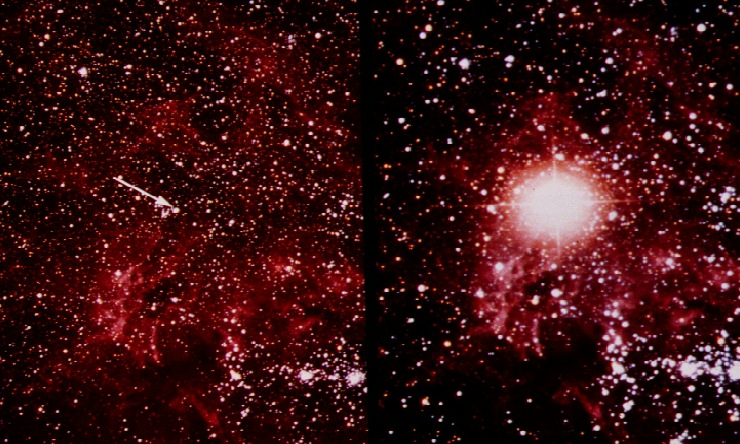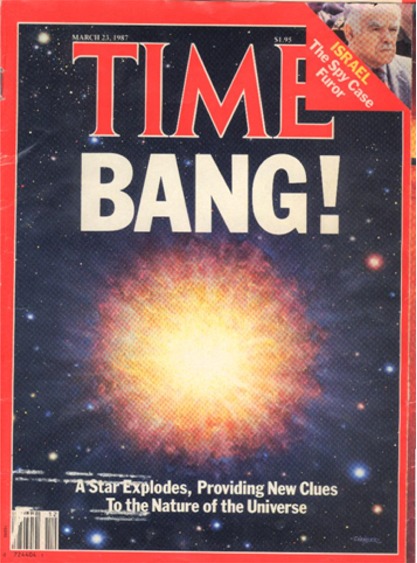The Continuing Search
|
In the years following these initial results the search for matter instability was broadened to include monopole catalysis of nucleon decay, neutron-antineutron oscillations, and nucleon decay into a multitude (30-40) different modes. The lifetime limits for some modes were pushed beyond 10^33 years. (See Physical Review Letters 57 1986 (1986)) Since some of the rare decay modes would give rise to much less Cherenkov light than the canonical (e+,pi0) mode it was obvious that the search for such decays would be facilitated by increasing the detector's light sensitivity. A proposal to do this was presented to the Department
of Energy in the fall of 1983. By September of 1986 we were taking data with four
times the sensitivity of the original detector. This allowed us
to set the trigger threshold down to 40 MeV, Little did we know that a few
months later we were in for a big surprise..... The surprise had not to do with
matter instability but with the
|
|
Supernova 1987a On the night of February 23, 1987 astronomers saw
something they hadn't seen for 400 years... When a large star has burned up all of the nuclear
fuel in it's center it becomes, The "before" and "after" pictures for SN1987a are shown below.
The arrow on the left shows the progenitor star,
Sanduleak -69 202. During the first few seconds of such an explosion
the temperature near the center is so The number of neutrinos emitted is extremely large...
about 10^57 escape in a few seconds. Of the 10^16 neutrinos that went through the IMB
tank only 8 interacted with enough energy
Pictures of one of the events in the IMB detector are shown below. To see pictures of all eight of the events click here
|
|
This shows the pattern of PMT hits on the back (northeast corner). A 30 MeV neutrino interacted with a proton in the water, producing a 28 MeV positron which caused the PMT's to light up. (The blue and purple PMT hits are random noise.) |
In this view the long purple line is the known neutrino direction coming from the Large Magellenic Cloud. The short purple line going right is the positron direction and the yellow squares show where its Cherenkov cone hit the north and east walls. |
|
When one considers that this pulse
of neutrinos had been racing towards us at the speed of light Another 11 events, similar to
those in IMB, were detected deep underground These two experiments were the first
to see neutrinos from a supernova. These events gave a remarkable confirmation
of theoretical models of the physics of supernovae.
Meanwhile, the pulse of neutrinos
from Sanduleak continues, at the speed of light, In another 100,000 years it will
have passed all of the 10 billion suns in our galaxy |
|
Below is the title page of the announcement of SN1987a
More details can be found in Physical Review D37 3361(1988)
For more pictures click here and search for "Vander Velde"
Go to top of: Page 1
|





